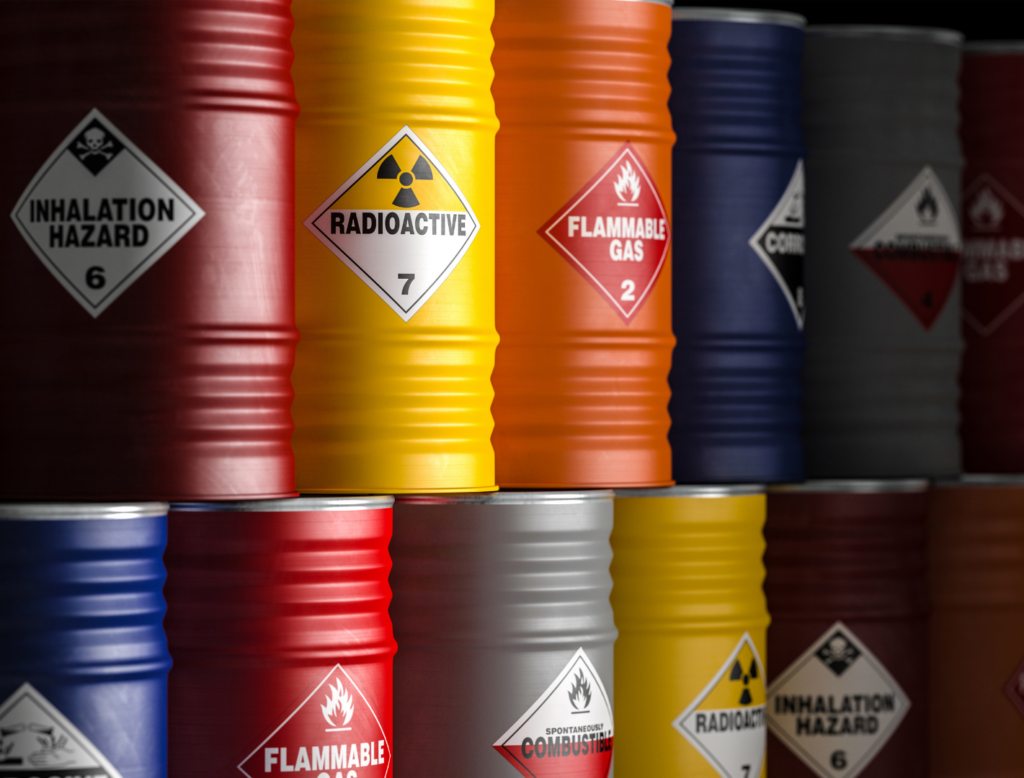Every business should be aware of the potential hazards that come with storing and handling dangerous goods. These substances can be hazardous to both employees and the public if not handled correctly. In this blog post, we will discuss some of the basics of managing these materials safely and effectively. We will also provide tips for getting started if your company is new storing and transporting dangerous goods and also understanding what some of your basic compliance obligations are.
We will be producing a series of blogs about managing dangerous goods which will get into further topics and details. This one is intended to be a high level overview to get you started!
Correctly identify and classify all dangerous goods
This includes visually inspecting containers and cross-referencing with safety data sheets and inventory management systems. Once you have identified the dangerous goods in your workplace, create an inventory of these materials in a dangerous goods register. Record the type of material, its quantity and location, any requirements related to storage or transportation, and any necessary permits or licenses for handling them. This information should be stored securely and readily accessible for employees who need it.

Correctly identify and classify all dangerous goods that you have in your workplace
Keep your inventory of dangerous goods up-to-date at all times. Regularly review quantities and locations so that you know exactly what’s in your workplace at any given time. Knowing what and how many dangerous goods you have in your workplace is key in determining what your storage threshold level is. This in turn determines under the applicable storage and handling regulations, what your compliance obligations are.
Ensure staff are trained in handling dangerous goods and understand your safety procedures
Train your staff on the hazards associated with these materials, how to recognise and respond to emergencies involving dangerous goods, as well as proper storage and transportation requirements. This will help to ensure that everyone is aware of the risks involved in working with these substances and knows how to act safely when handling them, including using the correct personal protective equipment.
Ensure staff are trained in handling dangerous goods and understand your safety procedures
Understanding your dangerous goods obligations can be a complicated process but it’s important for any business that works with these materials. Providing the right training, implementing safeguards and keeping up-to-date records of your dangerous goods inventory are essential components of effectively dealing with dangerous goods safely. Taking the time to properly manage these substances will pay off in the long run by helping you keep your business safe and compliant.
Label all containers and storage areas for dangerous goods
It is important that dangerous goods are correctly labelled and stored in the correct areas with signage that complies with the regulations to ensure public safety. Failure to correctly label or store these materials can lead to catastrophic outcomes, including accidental exposure, contamination of other materials, environmental damage, and injury or death.
The relevant regulations provide clear guidance on how dangerous goods should be identified and labelled so that they can be easily identified and their hazards minimised. These labels should include information such as the contents of the container, hazard symbols, warnings about potential risks, proper storage instructions, and handling instructions.
Label all containers and storage areas for dangerous goods
Storage areas for dangerous goods must also be clearly marked with appropriate signage indicating that hazardous chemicals are present. This will allow employees to quickly recognise potential dangers before entering an area or using equipment where there may be a risk of a hazardous incident occurring. By following these guidelines and taking necessary precautions when handling and storing dangerous goods businesses can help protect their staff, customers, and the environment and prevent serious accidents from happening.
Ensure that Safety Data Sheets are available and up to date
Safety Data Sheets (SDSs) are an important resource for workers dealing with dangerous goods, providing detailed information about the properties of each chemical and how to handle them safely. SDSs must be provided by suppliers when a dangerous good is supplied, and they should always be checked to ensure they relate to the dangerous good in question.

Every time a business obtains a new dangerous good from its supplier, the manufacturer or importer is obligated to give the business a free SDS for that hazardous chemical. Businesses are then responsible for making sure all staff have access to this SDS and that they are up to date (valid for 5 years) so staff are always knowledgeable about hazards relating to dangerous goods in their workplace.
Inspect all storage areas regularly for leaks, spills and other hazards
It is essential for businesses to regularly inspect areas where dangerous goods are stored for leaks, spills, or any other signs of danger. These checks can help prevent the potential release of hazardous chemicals enabling businesses to be proactive in managing hazards in their workplaces. Regular inspections also ensure that health and safety measures are in place and working properly, reducing the likelihood of any dangerous incidents occurring.

It is recommended that businesses keep clear and up-to-date records of their inspection schedule, checklist, and any corrective action taken as a result of their findings. Performing a risk assessment and ensuring the correct control measures in place is also important and required under the regulations. By having this information readily available, businesses can easily refer back to it and ensure that all safety measures are in place and working correctly at all times.
Have an emergency plan in place in case of a dangerous goods incident
Having an emergency plan in place should be a top priority for any business handling dangerous goods. In the event of an incident involving dangerous goods, a well-designed emergency plan can help save lives and protect property by providing clear instructions on what to do and how to react in such a situation. An emergency plan should include emergency procedures for responding to potential incidents, evacuating the premises, notifying emergency services and providing medical treatment or assistance. It should also provide effective communication between the person authorised to coordinate the emergency response and all people at the workplace. Finally, staff must be properly trained in how to execute the emergency plan effectively and safely.

By adopting these guidelines as a foundation for dangerous goods management, businesses can help protect their staff, customers, and the environment. Businesses should perform regular inspections of areas where dangerous goods are stored; have an emergency plan readily available, and ensure that all staff members are properly trained in how to handle dangerous goods without risking injury. By taking these necessary precautions, businesses can minimise the chances of serious incidents involving dangerous goods happening in their workplace.
We will be producing a series of blogs about managing dangerous goods which will get into further topics and details. This one is intended to be a high level overview to get you started and the following blogs will get into some important topics such as risk assessments, segregation of dangerous goods and plenty of others!
